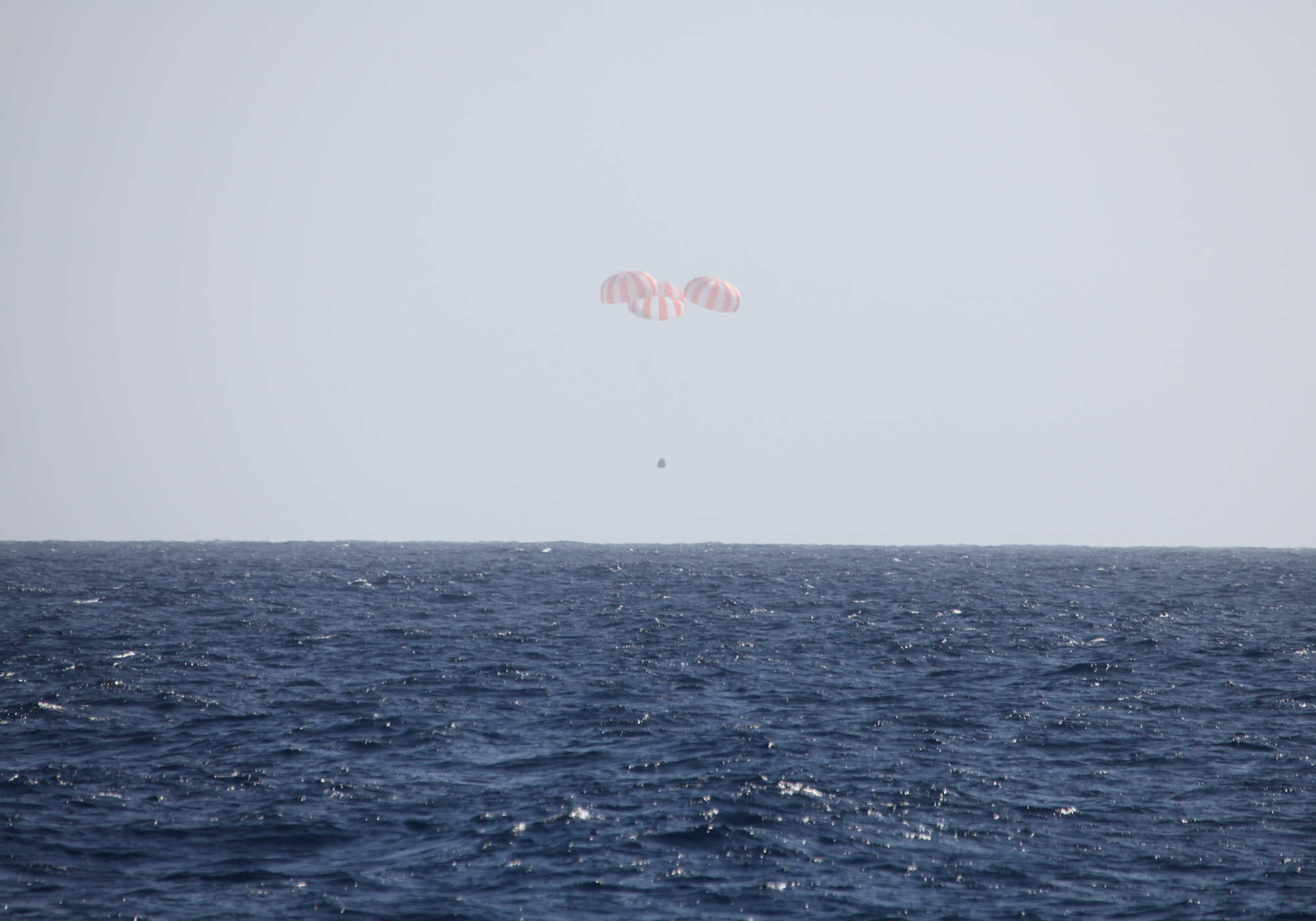Splashdown! The SpaceX Dragon has returned home safely, splashing down in the Pacific Ocean at 16:36 UTC (12:36 p.m. EDT) on Tuesday, March 26, 2013. "Recovery ship has secured Dragon," Tweeted SpaceX CEO
Elon Musk
. "Powering down all secondary systems. Cargo looks A-OK."
A team of SpaceX engineers, technicians and divers will recover the vehicle off the coast of Baja, California, for the journey back to shore, which NASA said will take 30-48 hours.
The big job will be unloading the 3,000- plus pounds (1,360 kg) of ISS cargo and packaging inside the spacecraft. The Dragon is currently the only vehicle capable of returning cargo and important scientific experiments back to Earth.
"The scientific research delivered and being returned by Dragon enables advances in every aspect of NASA's diverse space station science portfolio, including human research, biology and physical sciences," said Julie Robinson, International Space Station Program scientist. "There are more than 200 active investigations underway aboard our orbiting laboratory in space. The scientific community has eagerly awaited the return of today's Dragon to see what new insights the returned samples and investigations it carries will unveil."
See more images below of Dragon's return and mission to the ISS; we'll be adding more as the SpaceX team supplies them!
Here's a gif image of the splashdown:
[caption id="attachment_101015" align="aligncenter" width="450"]
A series of images shows the Dragon splashdown. Credit: SpaceX.[/caption]
[caption id="attachment_101013" align="aligncenter" width="580"]
This picture captures the Dragon just as it hits the water in the Pacific Ocean. Credit: SpaceX.[/caption]
[caption id="attachment_101009" align="aligncenter" width="580"]
Dragon was released from the International Space Station on March 26, 2013 during the CRS-2 mission. Credit: SpaceX.[/caption]
Dragon's release from Canadarm2 occurred earlier today at 10:56 UTC. The Expedition 35 crew commanded the spacecraft to slowly depart from the International Space Station
[caption id="attachment_101010" align="aligncenter" width="580"]
Dragon attached to the International Space Station during the CRS-2 mission. Credit: NASA.[/caption]
[caption id="attachment_101011" align="aligncenter" width="580"]
Dragon in orbit during the CRS-2 mission. Credit: NASA/CSA/Chris Hadfield[/caption]
Among the the scientific experiment returned on Dragon was the Coarsening in Solid-Liquid Mixtures (CSLM-3) experiment, which also launched to space aboard this Dragon. CLSM-3 studies how crystals known as dendrites form as a metal alloy becomes solid. The research could help engineers develop stronger materials for use in automobile, aircraft and spacecraft parts.
Dragon also is returning several human research samples that will help scientists continue to examine how the human body reacts to long-term spaceflight. The results will have implications for future space exploration and direct benefits here on Earth.
The mission was the second of at least 12 cargo resupply trips SpaceX plans to make to the space station through 2016 under NASA's Commercial Resupply Services contract.
 Universe Today
Universe Today
